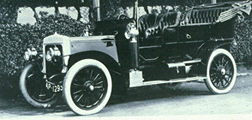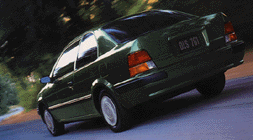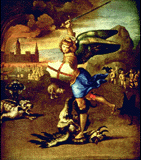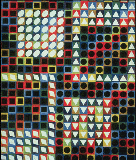

 The physical fact of movement is part of certain designed objects; we are speaking
here of literal movement. Sometimes the physical movement is
signaled by symbolic forms that suggest speed and motion. For example, cars,
when first invented met their movement function, but the form did not suggest
movement. Even after the mass production of automobiles began, the design had
little to do with the fact of movement.
The physical fact of movement is part of certain designed objects; we are speaking
here of literal movement. Sometimes the physical movement is
signaled by symbolic forms that suggest speed and motion. For example, cars,
when first invented met their movement function, but the form did not suggest
movement. Even after the mass production of automobiles began, the design had
little to do with the fact of movement.
 The engineering concepts of aerodynamics in the 1930's, originally developed
in connection with the airplane, were transferred to automotive design as well,
particularly as cars became faster, and marketing of cars became more competitive.
The result was forms that suggest movement and speed; we have all come to recognize
aerodynamic forms as a symbol for speedy movement.
The development of the car, airplane and of motion pictures in the early 20th century
created a romantic fascination with speed and movement; many artists began to
focus on movement as subject matter. The Classic film
King Kong Combines the fantastic with the love of these new symbols of
the industrial age, the airplane and the skyscraper, exploring with these symbols of motion and modernity
the clash between the pre- and post- industrial eras.
The engineering concepts of aerodynamics in the 1930's, originally developed
in connection with the airplane, were transferred to automotive design as well,
particularly as cars became faster, and marketing of cars became more competitive.
The result was forms that suggest movement and speed; we have all come to recognize
aerodynamic forms as a symbol for speedy movement.
The development of the car, airplane and of motion pictures in the early 20th century
created a romantic fascination with speed and movement; many artists began to
focus on movement as subject matter. The Classic film
King Kong Combines the fantastic with the love of these new symbols of
the industrial age, the airplane and the skyscraper, exploring with these symbols of motion and modernity
the clash between the pre- and post- industrial eras.

The invention of motion pictures introduced the element of movement to
visual language. Edweard Muybridge has been credited for first developing the idea of taking a series
of photographs that combined could be viewed as a moving picture, actually done to settle a bet
as to whether all four feet of a galloping horse were ever off the ground at the same time. This first motion picture was made in 1872.
Follow this link and scroll down to see the result .
For the first time we had an art form that literally moved. Humor could now develop entirely new physical dimensions, as could dramatic and fantastic storytelling and dramatization. For example, you can watch some Buster Keaton clips, or this snippet of DW Griffith's 1915 epic "Intolerance".
The question for painters and others working
in static media was how to capture the sense of implied movement in
the fixed image that could not literally move. 
Prior to motion pictures, artists tried to show movement through diagonal
(off-balance) use of line and positioning of images in the composition.
However, new approaches were suggested by the multiple frame images of motion
picture film, and stop action photography. Futurist painters such as Balla used
these ideas to celebrate speed and movement. Marcel Duchamp's Nude
Descending a Staircase also attempted to capture the entire sequence of
action through "stop-action" imagery.
Finally, Alexander Calder began to create sculptures that actually moved, which he called mobiles. Subsequently many artists have used movement involving mechanical or electronic means that bridged the worlds of art and engineering.
Dance is probably the oldest art form that
involves movement. It is the
ultimate expressive use of the element of movement of objects through space in
time. Apparently practically everyone but me (Prof. Jirousek) had already seen this
video last summer of a wedding party
dancing down the aisle , but it is the best example I have ever seen of how movement-- and the
kind of movement-- can change the entire meaning and mood of a usually solemn event like a wedding.
Scroll to the bottom of the page for the video link.
Another way to think about movement is to consider how the viewer's eye moves through the composition. This is what we refer to as compositional movement. In this case we are not concerned with the presence (or lack of) implied motion in the image. We are concerned instead with how the viewer perceives the composition-- how the components relate and lead the viewer's attention.

Compositional movement may be classified as static: that is, movement of the eye
that jumps and hops between separate components of the image,
attracted by similarities and simply shifting to shapes with related shape or
color Compositions exhibiting static movement are characterized by
repetition of closed, isolated shapes and contrasts of color and/or value.
Movement may also be classified as dynamic. Dynamic movement is characterized by movement of the eye that flows smoothly from one area of the composition to another, guided by continuations of line or form, and by gradations of color or form.Dynamic movement is characterized by open shapes or shapes that closely relate to adjacent shapes.
The eye will always move through the composition in some way, so there is
always some sort of compositional movement. All compositions can be
described in terms of one or the other of these concepts - or both.
 |